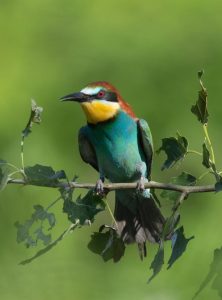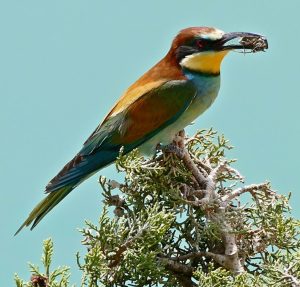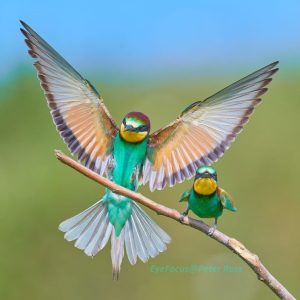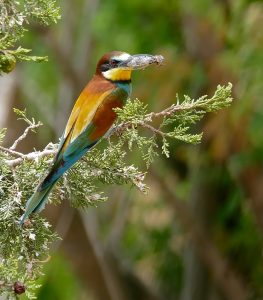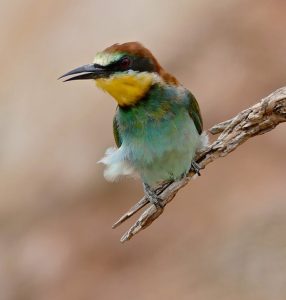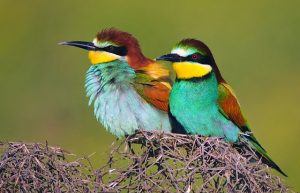Awe-Inspiring Beauty: Unveiling the Exquisite European Bee-Eater
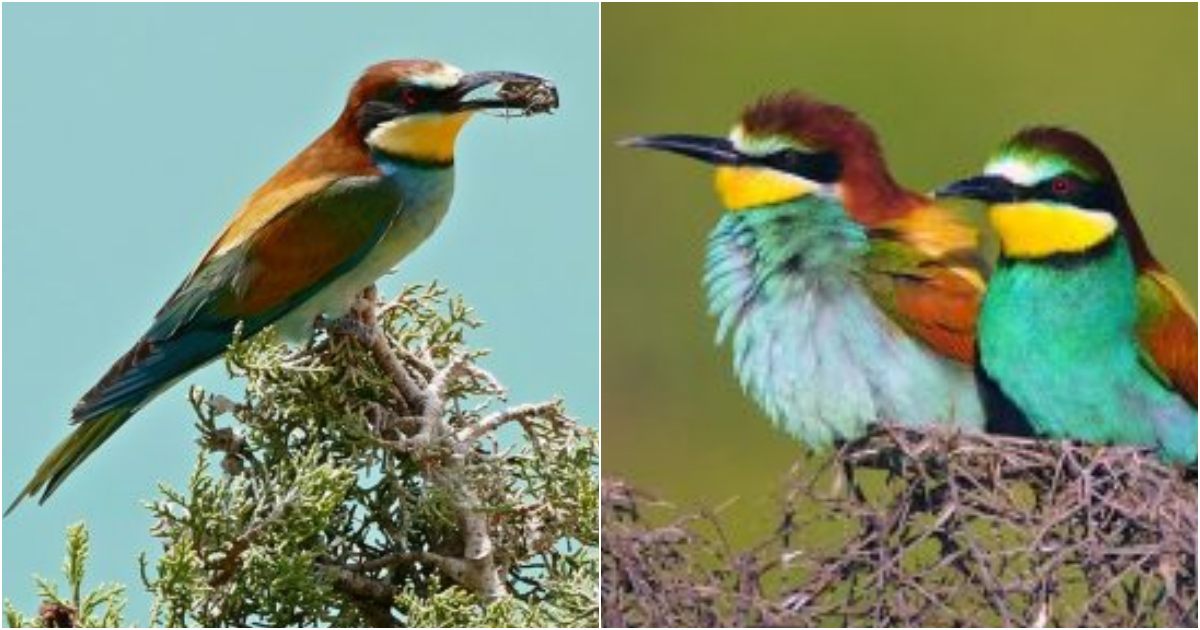
Prepare to be mesmerized by the resplendent colors adorning one of Europe’s most captivating avian species – the European bee-eater (Merops apiaster). Recognizable at first glance, this bird boasts a vibrant plumage that is particularly striking during the breeding season. A rich brown cap crowns its head, accentuating a brilliant yellow forehead. An eye-catching black eye band commences at the base of its bill, extending beneath the eye and almost reaching the nape of its neck. Just below the bill lies a radiant patch of yellow, bordered by a black band, and further below, its plumage transitions into a captivating blend of green and blue, spanning all the way to its tail. During flight, the tail reveals a central spike formed by two elongated feathers, adding an extra touch of visual allure.
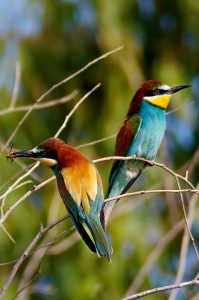
While female European bee-eaters bear a resemblance to their male counterparts, their scapulars and back exhibit a greener hue, and their throat and breast appear paler in comparison.
Juvenile bee-eaters exhibit a more subdued coloration, with brown eyes instead of the vivid red eyes seen in adults.
These remarkable birds breed in various regions, including southern and central Europe, northern and southern Africa, and parts of Asia. With the exception of a resident population in South Africa, they migrate to tropical Africa for the winter.
European bee-eaters can be found in and around river valleys, cultivated areas with trees, pastures, plains, and semi-desert regions featuring shrubbery.
When it comes to their dining preferences, these avian beauties are avid aerial hunters, feasting on insects, particularly bees. They also indulge in wasps, locusts, and dragonflies.
During the breeding season, European bee-eaters excavate burrows in sandy banks or cliff-top soil to create nests alongside their lifelong partners, sometimes with the assistance of previous offspring. Female bee-eaters typically lay 4 to 6 eggs from April to July in the northern hemisphere, or from October to November in South Africa. Both parents take turns incubating the eggs for up to 20 days, with the female taking the night shift. Hatchlings take flight approximately one month after hatching, marking an important milestone in their development.
While European bee-eaters may face hunting pressures as pests, they are currently classified as a species of Least Concern on the IUCN Red List, reflecting their stable population status.
